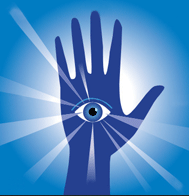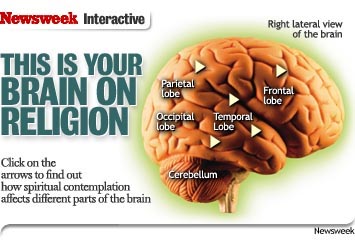Winkelman, M. (2004), Shamanism as the Original Neurotheology. Zygon, 39: 193–217. doi: 10.1111/j.1467-9744.2004.00566.x
2005 Pilgrimages and Healing. Jill Dubisch and Michael Winkelman,, eds. Tucson: University of Arizona Press.
2004 Divination and Healing: Potent Vision. Michael Winkelman and Philip Peek, eds. Tucson: University of Arizona Press.
SOLE AUTHOR ARTICLES
2006. Shamanism and the Biological Origins of Religiosity. Shaman 14(1&2): 89-116.
2006. Cross-cultural Assessments of Shamanism as a Biogenetic Foundation for Religion. In: Patrick McNamara, ed. Where God and Science Meet: How Brain and Evolutionary Studies Alter Our Understanding of Religion. Pp. 139-159. Westport, CT: Praeger.
2006 Teaching about Shamanism and Religious Healing: A Cross-cultural, Biosocialspiritual Approach. Pp. 171-190. In: L Barnes and I. Talamantez, Eds. Teaching Religion and Healing. Oxford: Oxford University Press. (with Chris Carr)
2005 Understanding Consciousness Using Systems Approaches and Lexical Universals Anthropology of Consciousness 15(2): 24-38 2005
2004 Spirits as Human Nature and the Fundamental Structures of Consciousness. In: From Shaman to Scientist Essays on Humanity’s Search for Spirits, J. Houran, ed. Lanham, MD.: Scarecrow Press. Pp. 59-96.
2004 Shamanism as the Original Neurotheology. Zygon 39 (1): 193-217.
2004 Introduction: Divination and Healing Processes. Michael Winkelman and Philip Peek. In Divination and Healing: Potent Vision. Michael Winkelman and Philip Peek, eds. Tucson: University of Arizona Press. Pp.3-25.
2004 Spirituality and the Healing of Addictions: A Shamanic Drumming Approach. In: Religion and Healing in America, Edited by Linda L. Barnes and Susan S. Sered. New York: Oxford University Press. Pp. 455-470
2004 Shamanism: Update. In: Encyclopedia of Religion, 2nd. Edition. Jones, Lindsay, ed. Thompson Gale Pub. Pp. 8274-8280.
2004 Cross-cultural Perspectives on Shamanism. In: Shamanism An Encyclopedia of World Beliefs, Practices and Culture. M. Walker and E. Fridman, eds. Santa Barbara, Ca, ABC Clio.pp. 61-70.
2004 Divination. In: Shamanism An Encyclopedia of World Beliefs, Practices and Culture. M. Walker and E. Fridman, eds. Santa Barbara, Ca, ABC Clio. pp. 78-82
2004 Neuropsychology of Shamanism. In: Shamanism An Encyclopedia of World Beliefs, Practices and Culture. M. Walker and E. Fridman, eds. Santa Barbara, Ca, ABC Clio. pp.187-195.
2003 Evolutionary and Neurohermeneutic Approaches to Culture and the Brain. Reviews in Anthropology 32(4): 275-295
2003 Psychointegration: The Physiological Effects of Entheogens. Sidestreet Electronic Journal www.sidestreet.org/sitestreet/winkelman/winkelman1.html
2003 Shamanism and Innate Brain Structures: The Original Neurotheology, In: NeuroTheology: Brain, Science, Spirituality, Religious Experience, Rhwan Joseph, ed. University Press. Pp. 387-396.
2003 The Shamanic Paradigm: A Biogenetic Structuralist Approach. Reply to Reviews of Michael Winkelman’s Shamanism. The Neural Ecology of Consciousness and Healing in the Journal of Ritual Studies Book Review Forum, Vol 18(1): 119-128.
2003 Psychointegration: The Physiological Effects of Entheogens. Entheos 2(1):51-61
2002a Shamanism and Cognitive Evolution. Cambridge Archaeological Journal. 12(1): 71-101.
2002b Shamanic Universals and Evolutionary Psychology. Journal of Ritual Studies. 16(2): 63-76.
2002c Shamanism as Neurotheology and Evolutionary Psychology. American Behavioral Scientist. 45(12): 1873-1885. This article is in an Adobe PDF format. To download Adobe Acrobat Reader, please go to this website http://www.adobe.com/prodindex/acrobat/readstep.html.
2001 Psychointegrators: Multidisciplinary Perspectives on the Therapeutic Effects of Hallucinogens Health Practice Review. 6(3): 219-237.
2000 Shamanism: The Neural Ecology of Consciousness and Healing. Westport, Conn.: Bergin and Garvey.
1997 Altered States of Consciousness and Religious Behavior. In Anthropology of Religion: A Handbook of Method and Theory. S. Glazier, ed. Westport, Conn.: Greenwood, 393-428.


